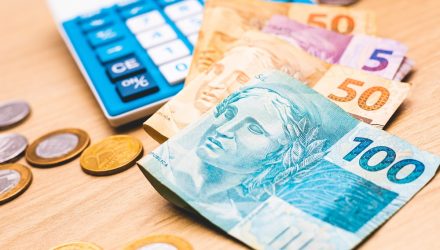Luiz Inácio Lula da Silva returned to power in Brazil last year following a controversial election, a prison stint for corruption, and two prior terms in the country’s top office earlier this century.
His previously heavy-handed approach to dealing with state-owned enterprises and long-running track record of a lack of free market credentials spooked some global investors. Today, some market observers have a new perspective on Lula, and the positive implications could extend beyond the country’s large-cap equities.
The VanEck Brazil Small-Cap ETF (BRF) is up 17.57% year-to-date, with essentially all of that gain realized over the past month. Coming off a 3.73% jump last week, the VanEck exchange traded fund is outpacing the large-cap MSCI Brazil Index by nearly 1,100 basis points year-to-date. Add to that, Brazilian small-caps, though usually more volatile than their U.S. counterparts, are thumping domestic small stocks this year. The Russell 2000 is higher by just 1%, while the S&P SmallCap 600 Index sports a modest loss.
Lula Impresses Investors
Much of the ebullience ascribed to Brazilian stocks this year can be attributed to Lula, who recently pitched a fiscal framework that global investors view as a pleasant surprise.
“The framework ties government spending increases to revenue increases, and promises a primary budget surplus (excluding debt payments) by 2025. That wouldn’t be enough to dig Brazil out of its 75%-of-gross-domestic-product debt hole, but it points in the right direction,” reported Craig Mellow for Barron’s.
Adding to the allure of BRF and Brazilian stocks at large is the point that equities in Latin America’s largest economy trade at discounts to what investors will find in Mexico — the region’s second-largest economy. Another point in favor of the Brazil investment thesis is that the central bank there may start lowering interest rates.
Interestingly, analysts view easier monetary policy as constructive for bank stocks because it can boost asset quality and improve consumer payment trends. BRF allocates about 6% of its weight to bank stocks.
The combination of lower interest rates and a more market-friendly Lula serves another aim. As a result, the local economy could improve, in turn lifting consumer-facing stocks. That’s relevant for investors to consider because BRF allocates nearly 30% of its weight to consumer discretionary and consumer staples stocks. Economy airline Azul Sa, which is a BRF holding, was one of the Brazilian stocks highlighted in the Barron’s report.
For more news, information, and analysis, visit the Beyond Basic Beta Channel.
The opinions and forecasts expressed herein are solely those of Tom Lydon, and may not actually come to pass. Information on this site should not be used or construed as an offer to sell, a solicitation of an offer to buy, or a recommendation for any product.







